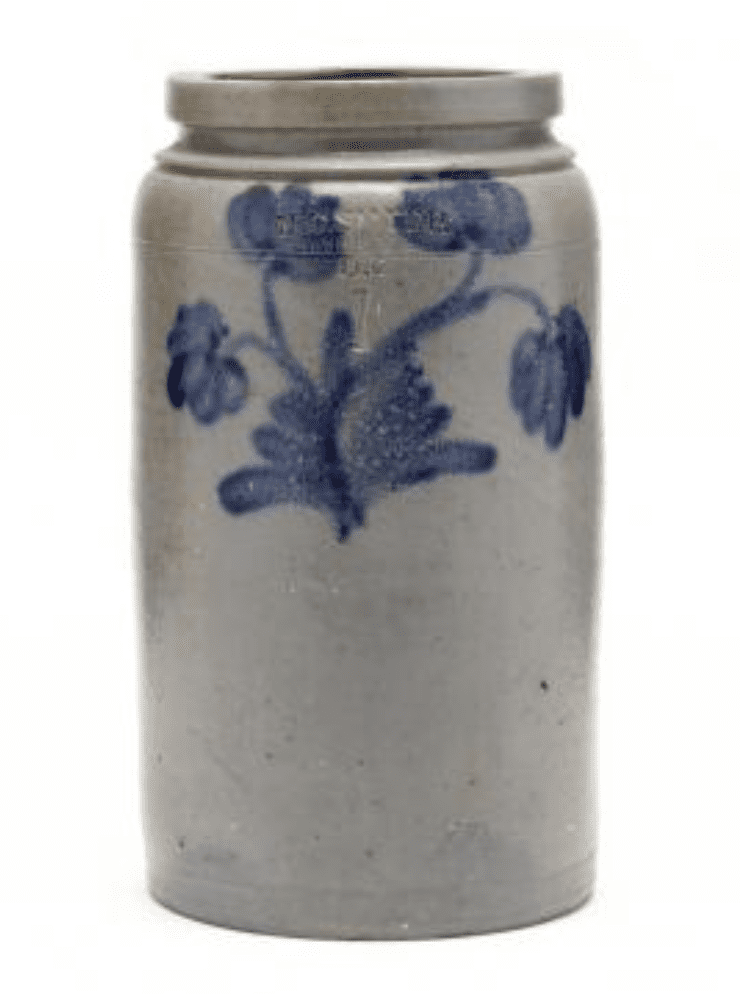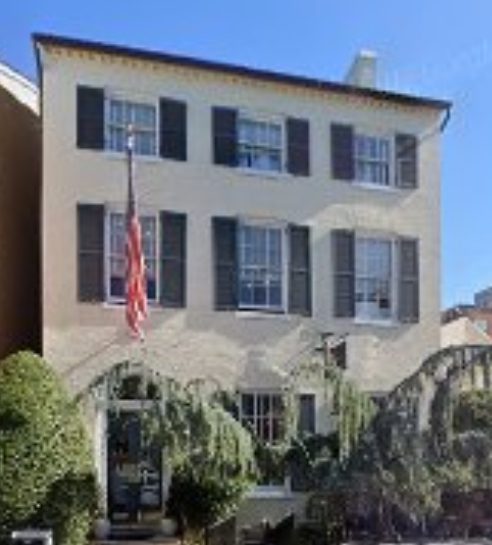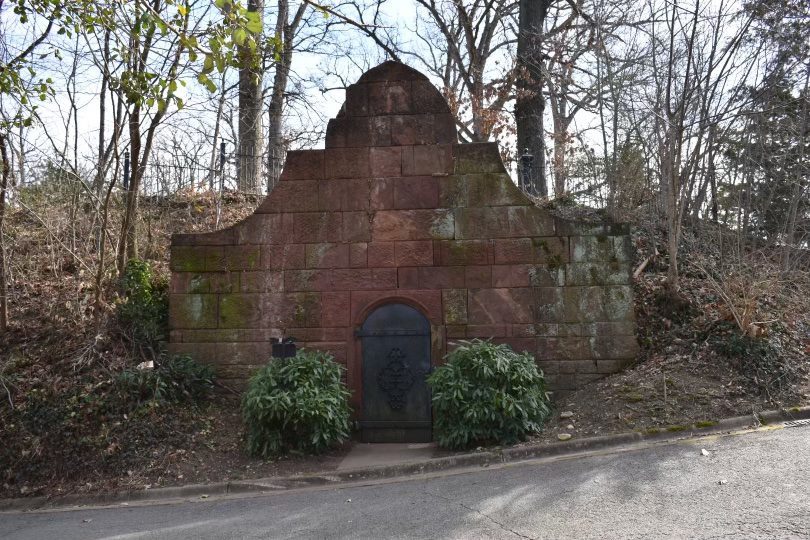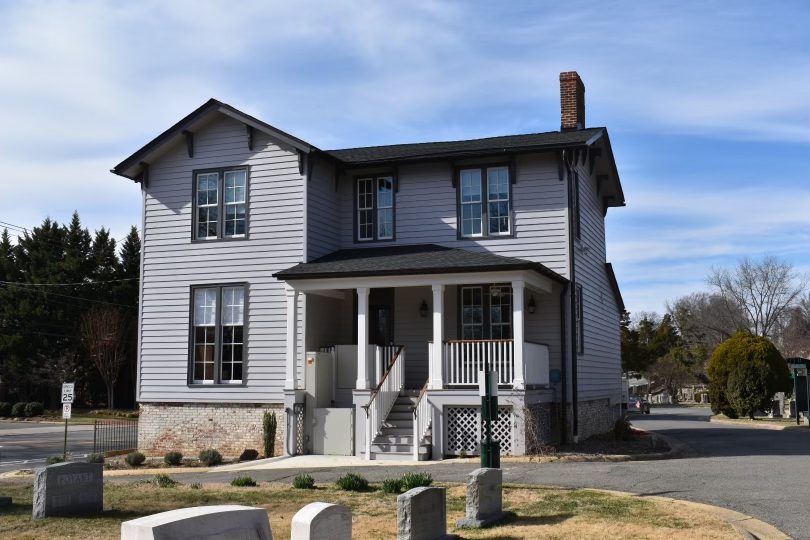Hugh C. Smith at Work
Hugh Charles Smith was a notable figure in the business world. He and his family were involved in various enterprises, including a pottery manufactory, multiple foundries, and real estate investments. Hugh, along with his father and brother, managed the Wilkes Street Pottery from 1825 until 1841. In 1831, Hugh C. Smith took over the helm of the business. The pottery became well-known for its mark “H. C. Smith/Alexa DC,” a signature that remained in use until 1847, coinciding with Alexandria’s separation from Washington D.C. Hugh C. Smith passed in August 1854.

Hugh C. Smith’s Attitude on Slavery
Hugh C. Smith resided at 111 North Alfred Street, a location historically known for housing a sugar refinery factory. Upon his death, Smith’s will included provisions for his personal slave, the sole African-American residing in his household. This individual, named Addison Webster, was to be granted freedom at the age of 25. Smith’s will stated: “To my servant Addison Webster, upon attaining his freedom, I bequeath one hundred dollars, advising its deposit in a savings bank until it can be used beneficially. I also recommend Liberia as a potential home for him.” Although Smith was not a member of the American Colonization Society, records show he made a donation of $5 to the society in 1853. It is noteworthy that Hugh Smith, the father, manumitted Webster but retained his services until the age of 25.

John Swann, the previous owner of the Wilkes Street Pottery before the Smith family, also had a history with slavery. He owned and eventually freed a slave named Thomas Valentine, who worked at the pottery and continued his employment under the Smiths’ management. The Smiths agreed to release Valentine at the age of 21. Additionally, David Jarbour, a freed African-American, was employed at the pottery during this period.

Hugh C. Smith manumitted a woman and her three children in 1840. They had been purchased in 1836 from Franklin and Armfield. In fact Smith manumitted all his slaves, no later than the age of 25. He also allowed them to purchase their freedom and recognized marriages. Smith’s attitude on slavery was distinctive for the time.
Founding a Resting Place: The Visionary Creation of a Public Cemetery by Hugh C. Smith
Hugh C. Smith executed a notable transaction by selling twenty-two acres of land to 30 stockholders for $2,000. This land was earmarked for a specific purpose: the creation of a public cemetery. A follow-up deed in 1855 detailed the planned layout of this land, which included carefully arranged burial plots, pathways, alleys, and sturdy boundaries. The plans also incorporated a caretaker’s residence, a chapel, and a receiving vault. Although Demaine and Wheatley Funeral Homes were in operation at the time, their widespread popularity only surged post-Civil War. Since families were primarily responsible for funeral arrangements, the receiving vault became an essential feature, providing a temporary resting place for the deceased under challenging burial conditions, like frozen or excessively moist soil.


Unveiling Legacy: The Grand Dedication of Ivy Hill Cemetery – A Historic Evening of Commemoration
The grand opening of Ivy Hill Cemetery took place on June 18, 1856, with a majestic dedication ceremony. This significant event occurred on a Wednesday evening and featured solemn prayers led by Rev. L. F. Morgan and E. J. Newlin, melodious hymns performed by the Musical Association, and an impassioned speech delivered by David Funsten, Esq. Despite the potential for rain, a large number of people assembled to commemorate this momentous occasion.
Eternal Heritage: Tracing Time Through Ivy Hill Cemetery’s Distinguished Residents and Legacy
Hugh C. Smith and his descendants are laid to rest in Ivy Hill Cemetery, a site that hosts graves as far back as 1802. Among the distinguished individuals buried here is Rev. Lord Bryan Fairfax. Presently, Ivy Hill covers twenty-two acres and serves as the eternal abode for numerous prominent residents of Alexandria. The cemetery is the burial site for illustrious families such as the Burkes, Herberts, Greens, Leadbeaters, Fowles, Demaines, Wheatleys, and Yates, among others.


Sources of Information
Ludlow, M. M. (2016). The Founding of the Ivy Hill Cemetery in 1854 & Hugh C. Smith.
Ludlow, R. P. A., & Michael, M. (2020). Hidden Lives in Alexandria, Virginia.
MESDA Journal. (n.d.). Retrieved [January 2, 2024], from https://www.mesdajournal.org
City of Alexandria. (1995). Archaeological report 42: 1315 Duke Street, the sugar house, Alexandria, Virginia, a history and archaeological study. https://media.alexandriava.gov/content/oha/reports/ArchPub42NAlfredStSugarHouseHistory1995Revis.pdf
Evening Star. (1856, June 21). Evening Star (Washington, District of Columbia).